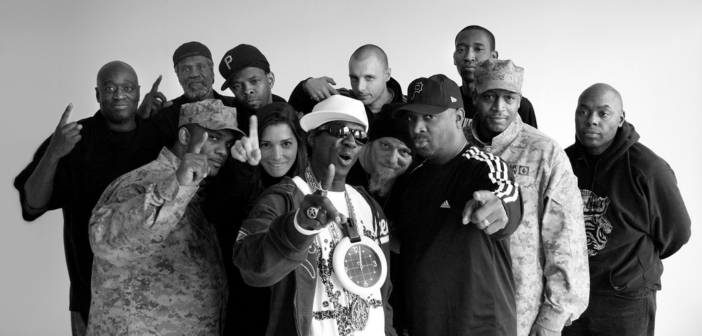From The 2 Live Crew to Lil Wayne to Kendrick Lamar, rap music has been growing and evolving for generations.
Beginning in the 1970s at New York ghetto block parties, according to National Public Radio’s World Cafe, hip-hop and rap music made a statement by “isolating percussion breaks of funk, soul and disco songs, and extending them.” Performers would recite rhymes and entice the audience to interact with the speaker. Today’s concept of rap is not much different. A single performer or group spits out a few rhymes about whatever topic they wish to address to a listening audience.
What started out as a block party performance turned into an internationally known genre. DJ Kool Herc is considered the very first official rapper, born out of the rhythm and poetry that began in the late ’70s. What followed was a landslide of new artists performing music that was catchy, poetic and focused on feeling good and having fun.
Artists such as Grandmaster Flash and Melle Mel were what laid the groundwork for newer artists to come forward with different beats and flows that keep changing the genre.
“It’s something that I like to listen to before games, or just when I want to get excited about something,” said Page Desenberg, ‘21. “It just really pumps you up and makes you ready to take on anything.”
While it may be head-bopping and fun, rap music often tells a political or social message. In the ’80s and ’90s, rappers used their albums and singles as social platforms to argue racial and economic disparages in black communities.
According to AllMusic’s biography of Run DMC, the rap group led the way in performing politicized rap, creating music that focused on the hardships of black people living in the projects and slums of urban society. It was at this time that rap started becoming a rebellious genre.
Public Enemy became a hip-hop powerhouse in the late 1980s, with several hits including “Fight the Power” and “Bring the Noise.” They are considered one of the most controversial rap groups of all time because of their radical ideas about protest and revolution.
N.W.A was one of the founders of “gangsta rap” and their anti-police messages—even a song titled “Fuck the Police” in 1988 —led to controversy surrounding relations between white cops and the rap group in the 1990s. The FBI even got involved, sending an angry letter to the group’s label, Ruthless Records, about the implications of the song.
Another artist at the time, Ice-T, with his group Body Count, released a song about literally killing police titled “Cop Killer” in 1992. This caused a flurry of police departments all over the country to demand the song to be pulled from distribution, according to Vice Noisey’s “Nice Song, What’s It About?” series. The band eventually agreed with their label to remove the song, but the impression remained.
These rebels paved the way for the symbol of hip-hop rebellion to become gangster rebellion.
Rappers such as Sir-Mix-A-Lot and Tupac Shakur became mainstream with songs like “Baby Got Back” and “California Love.” People were fascinated by these beats and mixes that blended different genres together, making hip-hop a more diverse kind of music.
As more diverse sounds started exploding throughout the black community, a more diverse type of rapper also started developing in mainstream culture. “Nerdy rap” started making an appearance later in the ’80s and ’90s, with artists and groups such as Vanilla Ice and The Beastie Boys. These rappers took their image as the oddballs seriously, inciting a different kind of rebellion: rebellion from the gangster rap that was becoming embedded in the hip-hop community.
Eminem brought an interesting blend of gangster and nerd rap to hip-hop when he entered the scene in the latter half of the ’90s. The Missouri slum native created his own controversy with his abusive and seemingly misogynistic lyrics.
There are several Eminem songs that explain different ways (it is unknown whether these are metaphorical) that he beats and rapes women. His single, “Kim,” details the fictional murder of his ex-wife. Feminists were outraged by the hateful words that Eminem spewed in his music, however, the artist continued to say hateful words against women throughout his whole career.
The 2000s rap scene is when the genre started to “mellow out,” and become more unified in both sound and content. Artists such as Lil Wayne, Jay-Z and Ludacris started to create one solid idea of what it meant to be a rapper. Spending lots of money and getting a lot of girls, the “fuck bitches, get money” mentality, started to become a trend among artists. 50 Cent and T.I. talk about “ghetto life” and how hard you must be to live on the streets.
This became the new ideal for several young adults, and social justice anthems took a backseat to materialistic pleasures.
Desenberg noted that as “society changes, our perception of what is rebellious changes. Newer rap is so much more aggressive than older rap. Old rap is much more relatable and easier to understand.”
As rap continues to grow into the 2010s, more social issues are being addressed. This can be found in Childish Gambino’s “This is America,” a commentary on police brutality in the U.S., or Logic’s single titled with the suicide hotline, aimed at shedding light on teen and young adult suicide.
There are still “mumble rappers,” rappers that can hardly be understood without a lyrics sheet in hand like Lil Pump, Future and Young Thug. These artists still follow the material view of gangster rap.
However, as more social issues arise, diversity in the rap community will also rise. Desenberg said, “I think that because social justice is becoming more prominent, we will see more diverse songs and lyrics in the future from the rap genre. Hopefully, it will keep moving forward.”


1 Comment
Childish Gambino is amazing.
Someone help me understand the appeal of Post Malone??